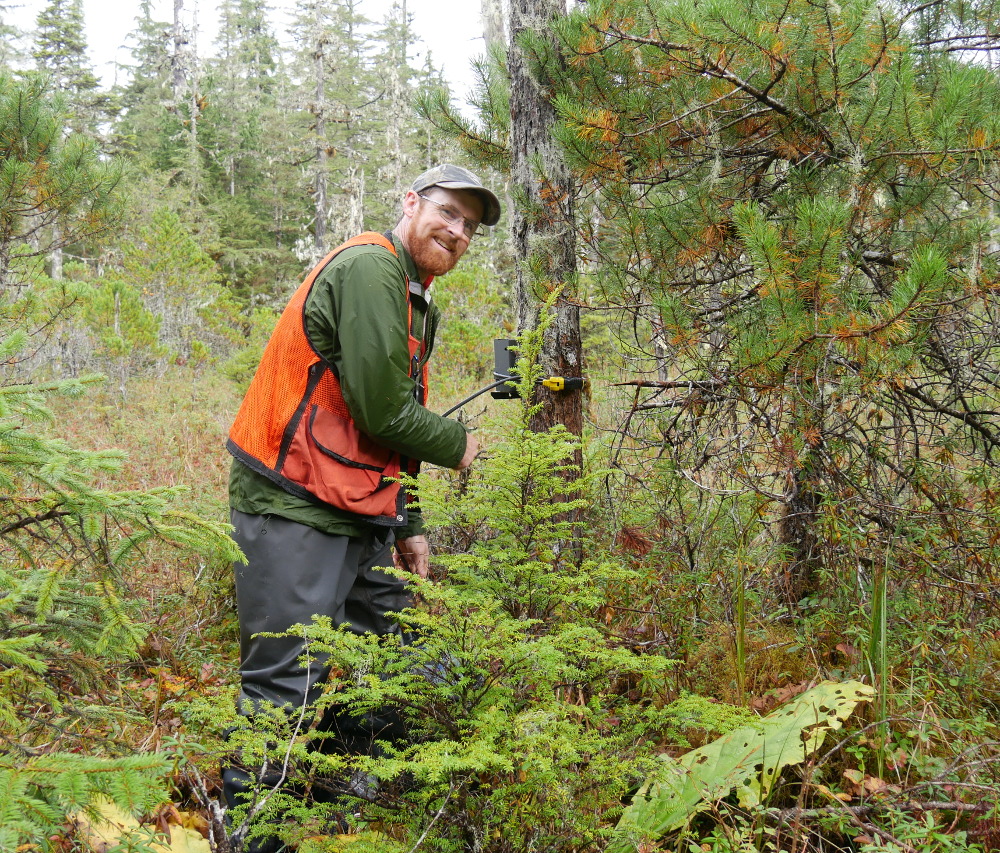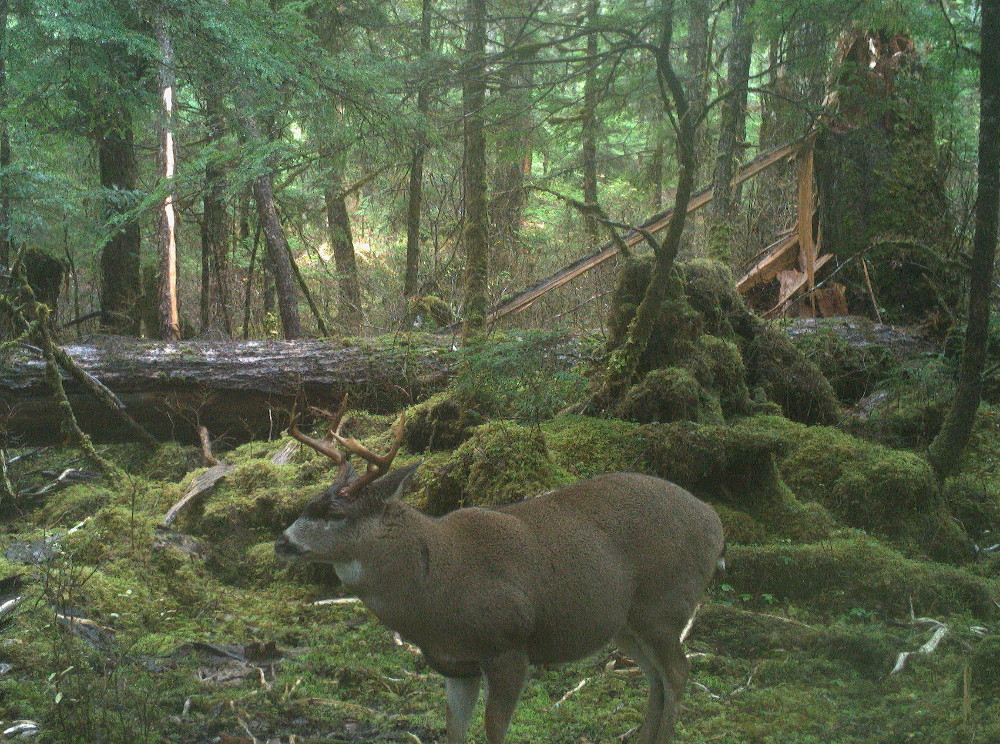
Hunters are already out in the woods of Southeast Alaska with moose season underway. An expanded deer hunting season starts up around Petersburg October 1st. Meanwhile four different arrays of game cameras are capturing thousands of photographs of the animals that wander some remote spots on Mitkof Island. They’re part of a multi-year study underway to get a better idea of the number of deer on the island.
Rainfall from the night before cascades down into a rock pit on a logging road on the central part of the island south of Petersburg. Dan Eacker, the Alaska Department of Fish and Game’s deer biologist for Southeast, digs some gear out from the back of his truck before heading out to check a nearby cluster of cameras.
“Yeah there’s 16 cameras in a cluster and they’re over a square kilometer,” Eacker said. “So they’re about 330 meters apart basically. And so the idea is that the cluster of cameras, the counts at one camera will be correlated with the counts at another camera. And we kind of just get counts of unmarked individuals from the camera, unmarked deer.”
These game cams are off the beaten track so they’re not getting many photographs of people. And they’re not easy to find, even for the one who installed them last fall. Eacker uses a GPS and compass to pinpoint his spots. One is down a steep timbered slope thick with blue berry bushes and downed trees.
The thick timber is the main reason these deer are so hard to count. But the remote game cams record images of the animals, day or night throughout the year. After a little walking we find one.
Eacker unlocks the camera housing, cleans out spiders and debris and swaps out memory cards. Each of the cameras has several hundred photos recorded since his last visit in the spring.
This array of cameras is one of four spread around the island and he’ll swap out memory cards on all 64 during this visit.
“Yeah we went through like 51,000 camera pictures from this last round,” he said. “And these cameras are really good too. You could see I’m always trying to clear the brush or anything that could be an obstruction to the camera in the winter time because the last thing you want is like a branch setting off your camera ten thousand times and you get back. And it also just kind of kills your battery as well if you’re not careful about branches and stuff that could trigger the camera in wind.”
Past methods of counting give a more general sense of trends in the population, whether deer numbers are rising or falling. Those methods include aerial surveys done on other nearby islands along with surveys of deer droppings. Eacker’s study includes now taking DNA samples from those deer droppings to get information on the population. Eacker also plans to capture and fit 20 deer with GPS collars next year. That will add to the information on how far deer wander.
And these photos will be used to fine tune the information from those other counts.
“You don’t know, did we just see fewer deer this year? We’re not correcting for this siteability factor at all,” Eacker explained. “We don’t know a whole lot about what proportion of the population we’re siting there. So the idea is that if we can sample on deer winter range in the winter time when the snow’s pushed them down to lower elevations then we can sample those populations, get an estimate of abundance and then we can look for an actual trend in actual abundance estimate, this is sort of corrected for siteability or detection probability if you will.”

Eacker has captured photos of many deer, along with moose, porcupine, wolves, black bear and even brown bear. He also has a photo of a wolverine from the Woodpecker Cove area on the southwestern end of the island. But it’s the deer photos he’ll be using to hopefully provide more reliable information about deer on Mitkof.
“I could imagine even if we just have abundance at the sites alone, and we don’t extrapolate to the whole island which ultimately is the goal to produce an island wide estimate, like we’re going to be able to look at trend in those abundance estimates across years and that’s going to give us really good information about what the population trend is doing,” he said, adding, “much more so than I think maybe a manager could maybe hang their hat a little bit more comfortably on that compared to the deer pellet group counts.”
A more reliable population count could be used in future management decisions for the old growth forest that deer rely on in snowy winters, or in future decisions on hunting seasons in the area. The main land manager on the island, the U.S. Forest Service, bases its decisions on logging and other development on a theoretical number of deer that the forest could sustain. And past hunting season decisions have been based on overall trends in the area, not actual estimates of deer.
After recovering eight of the camera cards, Eacker makes a quick stop at Petersburg’s gun range to sift through some of the photos from the past spring and summer. The population study continues into 2020.









